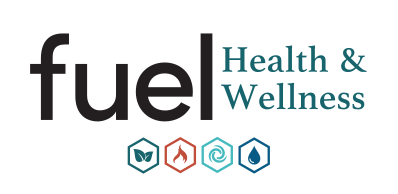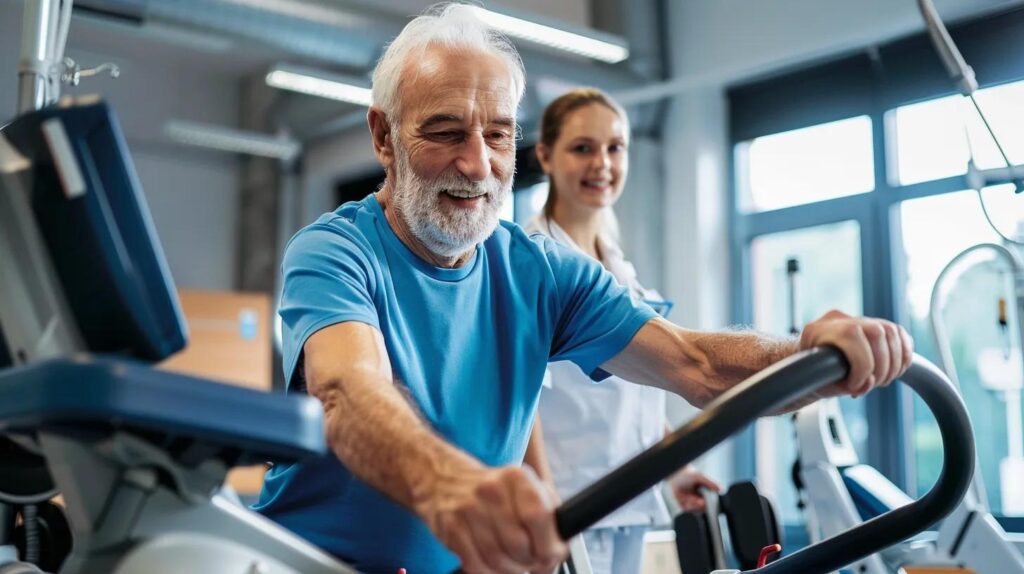Cardiopulmonary physical therapy is all about bringing back the vital function of your heart and lungs through focused exercises, smart breathing strategies, and clear guidance. Millions of adults find their daily lives limited by ongoing heart or breathing issues. But here’s the good news: specialized rehabilitation offers a proven way to boost your stamina, ease your symptoms, and truly elevate your quality of life. In this guide, we’ll break down what cardiopulmonary physical therapy is, explore its key parts—cardiac and pulmonary rehab—pinpoint who benefits most, highlight the amazing results you can expect, detail what a program looks like, show you how Fuel Health & Wellness crafts a personalized plan just for you, answer your burning questions, and help you find expert care nearby. For a deeper dive into our all-encompassing approach, explore Fuel Health & Wellness – Physical Therapy, Red Light Therapy, Massage, Personal Training.
What Exactly Is Cardiopulmonary Physical Therapy?
Cardiopulmonary physical therapy is a specialized area of physiotherapy that uses precisely designed exercise plans, breathing techniques, and patient education to get your heart and lungs working at their best. By tackling both heart and breathing limitations, this therapy helps your body use oxygen more effectively, builds your muscle strength, and promotes overall health.
How Does Cardiopulmonary Physical Therapy Boost Heart and Lung Function?
Cardiopulmonary PT works by combining aerobic training with exercises that strengthen your respiratory muscles. Aerobic conditioning improves how efficiently your heart pumps blood and keeps your blood vessels healthy. Meanwhile, specific breathing exercises increase the strength of your diaphragm and expand your lung capacity. The result? You’ll find you have more stamina and less breathlessness during everyday activities.
What Are the Main Pillars of Cardiopulmonary Rehabilitation?
Here’s a look at the core elements that make up a complete cardiopulmonary rehabilitation program:
| Component | What It Focuses On | Key Activities |
|---|---|---|
| Cardiac Rehabilitation | Heart endurance and safety | Walking on a treadmill, cycling, monitored stress tests |
| Pulmonary Rehabilitation | Breathing muscle strength and control | Diaphragmatic breathing, using an incentive spirometer, airway clearance techniques |
| Education | Taking charge of your health and reducing risks | Understanding heart-lung anatomy, sticking to your medications, healthy eating |
| Psychosocial Support | Building emotional strength and staying motivated | One-on-one counseling, connecting with support groups, learning stress management |
Each part of the program is designed to build upon the others, ensuring a coordinated effort to improve both your heart and lung systems.
How Is Cardiopulmonary Physical Therapy Different from General Physical Therapy?
This table highlights the key distinctions between general physical therapy and the specialized cardiopulmonary approach:
| Type of Therapy | What It Covers | Specialized Focus |
|---|---|---|
| General Physical Therapy | Muscle and joint pain, improving movement | Joint manipulation, balance exercises |
| Cardiopulmonary Physical Therapy | Optimizing heart and lung performance | Aerobic training, breathing exercises |
Cardiopulmonary PT hones in on your body’s overall endurance and how efficiently you breathe, while general PT concentrates on how your joints move and your muscles work together. This focused approach leads to significantly better outcomes for heart and lung conditions.
Who Can Benefit from Cardiopulmonary Physical Therapy?

Cardiopulmonary PT is ideal for anyone whose heart or lung function is compromised and who wants to improve their ability to be active and reduce their symptoms.
Which Heart Conditions Respond Well to Cardiac Rehabilitation?
Individuals recovering from a heart attack, heart failure, bypass surgery, or stent placement can experience better cardiovascular fitness, more stable blood pressure, and a lower risk of future heart events.
What Lung Conditions Are Effectively Managed with Pulmonary Rehabilitation?
Conditions like COPD, asthma, cystic fibrosis, and pulmonary fibrosis can be significantly improved through exercises that strengthen breathing muscles, techniques to clear airways, and controlled physical activity that boosts breathing efficiency.
The Power of Pulmonary Rehabilitation for COPD Patients
A comprehensive review and analysis of 39 studies, involving nearly 2,400 participants with COPD, revealed that pulmonary rehabilitation dramatically improved their ability to walk farther in the 6-minute walk test (6MWT). On average, patients could walk about 59.73 meters more than those receiving standard care.
This research strongly supports the idea that pulmonary rehabilitation leads to a notable increase in walking distance for individuals with COPD, aligning closely with the average improvements often cited.
Can Athletes and Older Adults Benefit from Cardiopulmonary Physical Therapy?
Absolutely! Athletes dealing with overtraining or exercise-induced asthma, as well as older adults experiencing a natural decline in heart reserve or lung flexibility, can all achieve better endurance, quicker recovery, and safer activity levels with programs tailored specifically for them.
How Does Cardiopulmonary PT Aid Recovery After Surgery?
Following procedures like heart valve repair, lung surgery, or a transplant, structured rehabilitation helps wounds heal faster, prevents complications such as lung collapse, and gets you back to your usual activities more quickly through carefully managed exercise and breathing exercises.
What Are the Major Advantages of Cardiopulmonary Physical Therapy?
Cardiopulmonary PT delivers tangible improvements in your stamina, how well you manage your symptoms, and your ability to perform daily tasks.
How Does Cardiopulmonary PT Enhance Exercise Capacity and Endurance?
By gradually increasing the intensity of exercise in a safe, supervised setting, your body learns to pump more blood with each beat and improve its ability to use oxygen. This means you can sustain activities like walking, climbing stairs, or light jogging for longer without getting as tired.
In What Ways Does It Reduce Symptoms Like Shortness of Breath and Chest Pain?
Exercises that strengthen your breathing muscles help you take deeper breaths and slow down your breathing rate, easing that feeling of breathlessness. Better blood flow to your heart and more efficient energy use can also reduce episodes of chest discomfort during physical activity.
How Does Therapy Improve Overall Quality of Life and Daily Function?
When your heart and lungs work better, everyday tasks become easier. You’ll find yourself able to manage self-care, get back to hobbies you enjoy, and feel more confident. This often leads to more social interaction and a greater sense of emotional well-being.
What Evidence Backs Up the Effectiveness of Cardiopulmonary Rehabilitation?
Here are some key studies that showcase the impressive clinical results:
| Landmark Study | Main Measure of Success | Outcome |
|---|---|---|
| Heart Failure Trial | Maximum oxygen intake (VO₂ peak) | A 15% increase over 12 weeks |
| COPD Rehab Meta-Analysis | Distance covered in 6 minutes | An average improvement of 50 meters |
| Post-Heart Attack Rehab Study | Overall survival at 1 year | A 26% reduction in mortality |
Boosting Peak Oxygen Intake in Heart Failure Patients Post-Cardiac Rehab
A study involving 93 patients with heart failure who completed a 3-week inpatient cardiac rehabilitation program showed a significant rise in their peak oxygen uptake (VO₂ peak). On average, patients saw a remarkable 116.5% improvement in their VO₂ peak, signaling enhanced heart and lung fitness and fewer cardiovascular events.
This research provides compelling evidence for how effective cardiac rehabilitation is in boosting peak oxygen uptake—a crucial indicator of heart and lung health—as highlighted in our discussion.
What Does a Cardiopulmonary Physical Therapy Program Entail?
A comprehensive cardiopulmonary PT program is a blend of exercise, education, and ongoing progress tracking.
What Kinds of Exercises Are Typically Included in Cardiac Rehabilitation?
Aerobic activities like walking on a treadmill, using a recumbent bike, and arm ergometry are prescribed. The intensity is gradually increased to optimize your heart rate response and blood flow to the heart muscle.
Which Pulmonary Rehabilitation Exercises Help Improve Lung Health?
Breathing techniques such as pursed-lip breathing, using special devices to train your inhalation muscles, and exercises to mobilize your chest wall are used to increase lung flexibility and help clear your airways.
How Are Personalized Treatment Plans Created for Patients?
A thorough evaluation—including stress tests, lung function tests (spirometry), assessments of your movement abilities, and a review of your emotional well-being—forms the basis for setting individual goals and designing an exercise plan that evolves with your progress.
What Role Do Education and Lifestyle Changes Play in Therapy?
Learning about how to manage risk factors, making dietary changes, quitting smoking, and reducing stress empowers you to maintain your improvements. Guidance on lifestyle adjustments helps ensure you stick with healthy habits long-term and minimize the return of symptoms.
How Does Fuel Health & Wellness Deliver Cardiopulmonary Physical Therapy?
At Fuel Health & Wellness, our integrated approach combines skilled therapists with supportive therapies and a focus on your individual needs.
What Makes Fuel Health & Wellness’s Cardiopulmonary PT Approach So Comprehensive?
We bring together proven physical therapy methods with nutritional guidance, stress management techniques, and wellness coaching. This holistic program addresses the physical, emotional, and lifestyle factors that significantly impact your heart and lung health.
How Does Personalized Care at Fuel Health & Wellness Enhance Recovery?
Our clinicians start with detailed assessments and then work hand-in-hand with you to create progressive, goal-oriented programs. Through continuous monitoring, we ensure you get back to your activities faster and experience fewer setbacks.
What Other Therapies Complement Cardiopulmonary Physical Therapy Here?
Supportive treatments like red-light therapy can help speed up tissue repair and reduce inflammation, offering added benefits for both your cardiac and respiratory recovery. Discover more in our Red Light vs Infrared Therapy Guide.
How Can Patients Book a Consultation or Appointment?
To explore how our personalized cardiopulmonary rehabilitation can help you, simply fill out our online form or give our clinic a call directly through the Contact Us page. We’re ready to assist you with prompt scheduling and answer any pre-visit questions.
What Are Common Questions About Cardiopulmonary Physical Therapy?
Even those familiar with rehabilitation often have questions about how different specialties connect, how long programs take, and who is eligible.
What’s the Difference Between Cardiac and Pulmonary Rehabilitation?
Cardiac rehabilitation is focused on strengthening your heart muscle and improving blood vessel function, while pulmonary rehabilitation concentrates on building your breathing muscles, clearing airways, and making your breathing more efficient.
How Long Does a Typical Cardiopulmonary Rehab Program Last?
Most comprehensive programs span 8 to 12 weeks, with 2 to 3 supervised sessions each week. However, the duration can be adjusted based on your individual progress and the severity of your condition.
Can Physical Therapy Help with Breathing Difficulties?
Yes, absolutely! Exercises designed to strengthen your breathing muscles and techniques to retrain your breathing patterns can significantly reduce breathlessness, improve how your body exchanges gases, and increase your ability to exercise when you have chronic lung diseases.
Who Is a Good Candidate for Cardiopulmonary Physical Therapy?
Eligibility includes individuals who have had a heart attack, heart surgery, suffer from chronic heart failure, COPD, asthma, cystic fibrosis, or anyone experiencing reduced exercise tolerance or breathlessness due to heart or lung issues.
Where Can You Find Cardiopulmonary Physical Therapy Near You?
Finding specialized care involves a bit of research and checking credentials.
How Do I Find Specialized Cardiopulmonary Physical Therapy Services Locally?
Look for therapists who are board-certified in cardiopulmonary rehabilitation, check the accreditations of facilities, and consider clinics that are connected with well-respected health organizations or medical centers.
What Should I Look For in a Cardiopulmonary Rehab Provider?
Seek out providers who have certified specialists in both cardiac and pulmonary rehabilitation, have access to equipment for stress testing and spirometry, and offer integrated support services like nutrition and emotional counseling.
How Does Fuel Health & Wellness Serve Local Communities with Cardiopulmonary PT?
We provide both in-person and virtual consultations, work closely with your primary care doctors and cardiologists, and host educational events for the community. Our goal is to make expert cardiopulmonary care easily accessible and well-integrated into your local healthcare network.
Cardiopulmonary physical therapy empowers you to regain your stamina, effectively manage your symptoms, and significantly improve your overall well-being through customized exercise and education. Fuel Health & Wellness combines expert clinical knowledge with holistic methods to deliver personalized programs that restore your heart and lung function and enhance your quality of life. Whether you’re recovering from surgery or managing a long-term condition, specialized rehabilitation offers a clear path back to an active and independent life. Reach out today to schedule your consultation and embark on a comprehensive journey toward stronger heart and lungs.


